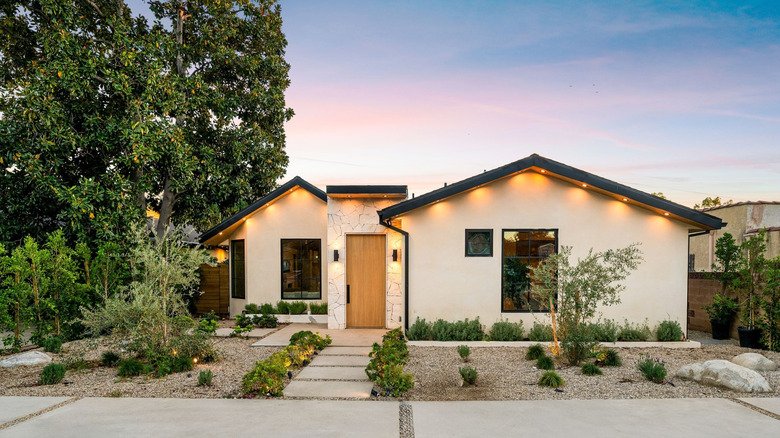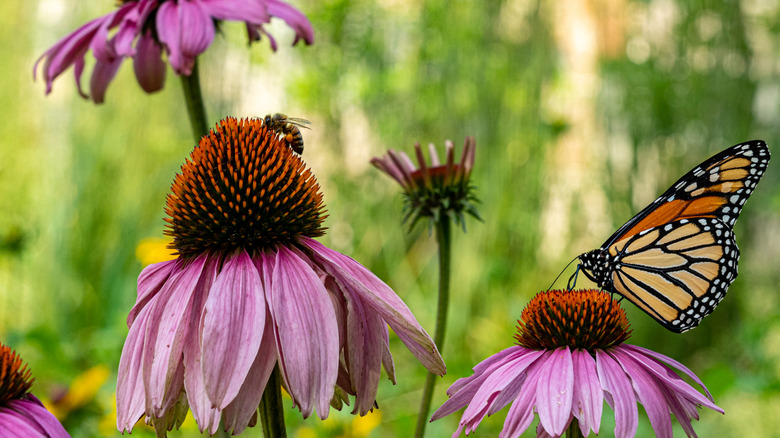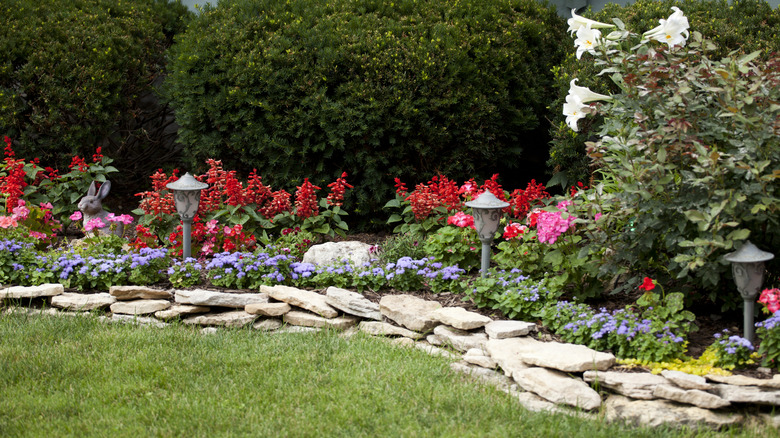The Major Downside Of Going Minimal In Your Garden
Minimalism is a core home decor trend and one that's made its way to our outdoor spaces, too. Think sleek pavers, muted color palettes, and those perfectly pruned sculptural plants lining the edges of your yard. Yet, while these gardens may feel serene and look beautiful, there's one big downside to them: a lack of biodiversity.
In the pursuit of that polished, low-maintenance outdoor look, many minimalist gardeners stick to just a few carefully chosen plants. And while the results can be stunning, they often come at the cost of biodiversity. With fewer plant varieties, especially when a garden lacks native plants, there's less for pollinators, like bees and butterflies, to enjoy and fewer places for birds and beneficial bugs to call home.
While you don't need a huge variety of plants to complete a minimalist garden, it's plant variety that supports pollinators and aids a thriving garden. Without this variety, your garden might start to feel a little lifeless over time, which is likely not the idea you had in mind when picturing your minimalist garden haven.
Why biodiversity is key to a thriving garden
A garden is so much more than its looks — it's also about how it works together to create an ecosystem for bugs, birds, and pollinators alike. Biodiversity plays a central role in maintaining a healthy garden, and a wider variety of plants – particularly native species – can contribute to this. The more plant diversity you have, the more pollinators you'll attract, and those bees, butterflies, and other insects are crucial for plant reproduction. That means more blooms, stronger growth, and a garden that flourishes year after year.
A greater diversity of plants also provides more food and shelter sources for birds and bugs — a larger variety of plants can lead to significantly more caterpillars and nesting birds. In contrast, gardens with minimal and more ornamental designs and plant species often lack the habitat that is needed to sustain wildlife in the garden. Biodiverse gardens are not only more vibrant and long-lasting, but they're also better at handling pests, so you can ensure your garden stays as healthy as it is beautiful.
How to have a minimalist garden that is still biodiverse
Creating a biodiverse garden doesn't mean your yard has to be huge, wild, or unruly. It's really about thoughtful variety and intentional choices. You can absolutely have a space that feels calm and curated while still creating your very own ecosystem. One of the easiest ways to bring biodiversity into your garden is by planting native species and plants with staggered blooming times. This ensures pollinators have reliable nectar sources from early spring through late fall.
To achieve this but still have the minimalist look you love, it's all about balance. Choose plants that are both low-maintenance and ecologically beneficial. For example, native plants are perfect for bringing birds to your yard, yet they require little fuss. Some great options could include coneflowers (Echinacea spp.), milkweeds (Asclepias spp.), sages (Salvia spp.), columbines (Aquilegia spp.), and honeysuckles (Lonicera spp.). Pair these pollinator-friendly blooms with evergreen shrubs, native grasses, or structured landscaping to keep your garden looking sleek, modern, and buzzing with life.


